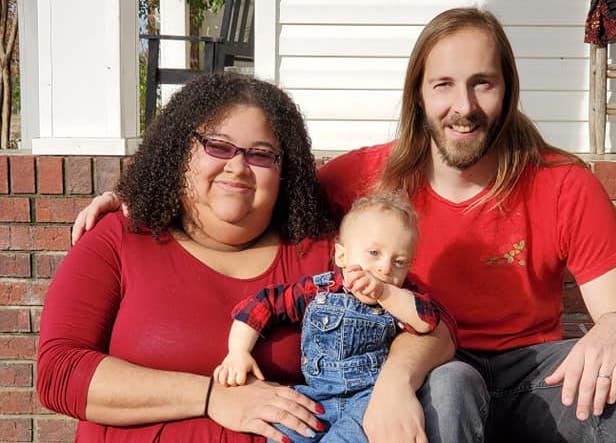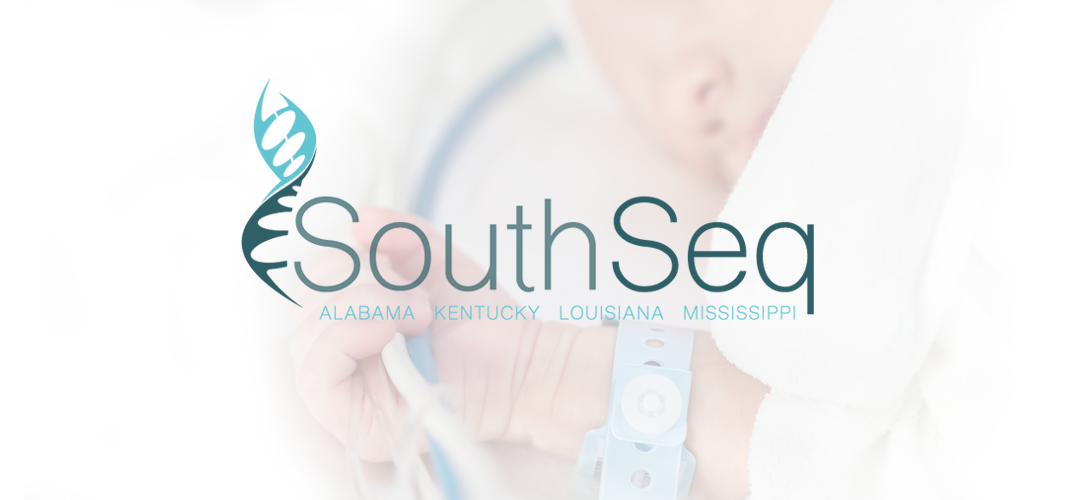Eighty-three days. That’s how long Matthew Jones and April Woidt-Jones were in the hospital with their newborn son. Eighty-three days in a cardiovascular intensive care unit. Eighty-three days of waiting, wondering if their son was going to be OK.
The first signs
David Jones was brought into the world on August 17, 2018; four weeks before his expected due date. At two days old, Matthew and April noticed a few differences. One stood out immediately – hearing loss.
“I’m hard-of-hearing, and I always assumed it might be genetic,” said Matthew, David’s father. “I have done genetic research, but little ever came up.”
David was also having breathing issues, which brought them to the NICU at Huntsville Hospital.
 “He couldn’t eat, was very quiet, and his breathing wasn’t slowing down,” Matthew explained.
“He couldn’t eat, was very quiet, and his breathing wasn’t slowing down,” Matthew explained.
After ten days of worry, investigation and two echocardiograms, they found congenital heart defects.
“He had two holes and a leaky valve. The heart was working overtime, and so were the lungs in order to keep up,” said Matthew. “The doctor said, ‘I’m going to go make a call.’ That’s something no parent ever wants to hear in a hospital, especially right after an echocardiogram before they’ve even left the maternity ward.”
The family was flown immediately by CareFlight to Children’s of Alabama.
“We had no idea if we were going to be there for two weeks or six months,” said Matthew.
83 days
Newborn David had open heart surgery three days later to repair the holes, but his heart was too small at the time to repair the leaky valve.
“It’s inadvisable to do valve repair on a premature heart because of how small they are,” Matthew explained. “It was originally hoped that if all went well, the valve could be fixed in several months or so when he was bigger.”
David’s growth was slow. He wasn’t gaining weight very fast and his heart was still fragile. He went into cardiac arrest.
“He coded,” said Matthew. “After about 14 minutes of CPR, he was still alive and breathing. We couldn’t afford another near miss, or wait any longer for a second attempt.”
David had a second heart surgery a week later. The valve was repaired and severe mitral regurgitation – when the mitral valve doesn’t close tightly, allowing blood to flow backward in the heart – was downgraded to mild mitral regurgitation.
“We saw significant progress in a matter of days that we could never accomplish in the previous two months,” said Matthew.
As a result of his heart issues, David wasn’t able to use a bottle and had to use a feeding tube for about three months. He took his first bottle at five months old.
The hospital kept David on the cardiovascular floor for two and a half months for observation. That’s two and a half months Matthew and April spent hearing about heart transplants, and tragic news being delivered to families around them.
“Being on that floor was a little more rough to me than the NICU. If another baby was successful, everyone heard about it. We celebrated. If one person was hurt, everyone hurt,” Matthew said. “We have many people to thank for helping us through those two and half months and surgeries, as well as thoughts that go out to others we met along the way with children who had similar difficulties.”
They spent a total of 83 days in the hospital after David was born. The heart surgeries took care of some of his issues, but a few still remained, including his hearing problems. The family began to wonder what was in store for their son – what did his future look like? Was there anything else genetic they needed to consider?
“I did a Google search and CHARGE syndrome kept coming up,” Matthew said.
SouthSeq
Shortly after the second heart surgery, the Jones family was offered the chance to participate in SouthSeq: DNA Sequencing for Newborn Nurseries in the South, which provides whole genome sequencing to newborns in neonatal intensive care units.
 They agreed to participate. “We just wanted to know why what happened, happened,” said Matthew, “and if it would happen again.”
They agreed to participate. “We just wanted to know why what happened, happened,” said Matthew, “and if it would happen again.”
SouthSeq is a National Institutes of Health (NIH) funded collaboration with the HudsonAlpha Institute for Biotechnology and five clinical sites including the University of Alabama at Birmingham (UAB) School of Medicine, University of Mississippi Medical Center, University of Louisville, the Woman’s Hospital in Baton Rouge, and Children’s Hospital of New Orleans.
“The goal is to provide this service, free of charge, to a large and diverse set of families who might benefit from it, including among populations where genomic and genetic testing have historically been less accessible,” said Greg Cooper, PhD, HudsonAlpha faculty investigator and one of the project leads for SouthSeq. “If a baby’s symptoms suggest a genetic condition, we can use whole genome sequencing to try and find an answer as early as possible.”
In January 2019, Matthew, April and their five-month-old son made the trip to Birmingham to get their test results. The diagnosis was one Matthew previously considered while researching his son’s symptoms.
He and his son both tested positive for a CHD7 genetic mutation. Mutations in the CHD7 gene are associated with CHARGE syndrome, a disorder that affects many areas of the body. CHARGE is an acronym for the combined symptoms that usually present with the disorder including but not limited to coloboma (an eye abnormality), heart defects, atresia choanae (also known as choanal atresia), growth retardation, genital abnormalities, and ear abnormalities.
“It’s not unusual for genetic disorders to present differently, even in the same family. There are several families with CHARGE syndrome where parents receive their diagnosis only after having a child with more severe symptoms,” explained Veronica Greve, one of the certified genetic counselors involved in the SouthSeq research study.
Greve has seen the impact this information can make on a family. “A genetic diagnosis may help families in different ways. Through SouthSeq, we hope to empower families by providing a diagnosis that can give families a roadmap when caring for their children and help families find connections with others going through a similar journey.”
Planning for the future
Although a genetic disease may not have an obvious treatment or cure, there is still value in having a correct diagnosis. With a diagnosis in hand, the Jones family has an idea of what to expect and can plan for the future.
“There’s a 50/50 chance if we have a second child, they will also have CHARGE syndrome. Their case might be like mine, or it might be much worse,” Matthew explained. “But it’s helpful having the diagnosis because we know what to check for.”
Since receiving a diagnosis, Matthew has been able to connect with other families and patients with CHARGE syndrome through social media. He also helps manage a Facebook group for fathers with children in the NICU, including other fathers whose children have participated in SouthSeq. The group has 400 members and continues to grow every day.
Since its launch, the SouthSeq project has sequenced the genomes of more than 240 newborns, many of whom are from a medically underserved or underrepresented group. If you are interested in learning more about SouthSeq, visit https://hudsonalpha.org/southseq/ or call 256-327-0461.
The SouthSeq project (U01HG007301) is supported by the Clinical Sequencing Evidence-Generating Research (CSER) consortium, which is funded by the National Human Genome Research Institute (NHGRI) with co-funding from the National Institute on Minority Health and Health Disparities (NIMHD) and the National Cancer Institute (NCI). More information about CSER can be found at https://cser-consortium.org/.


